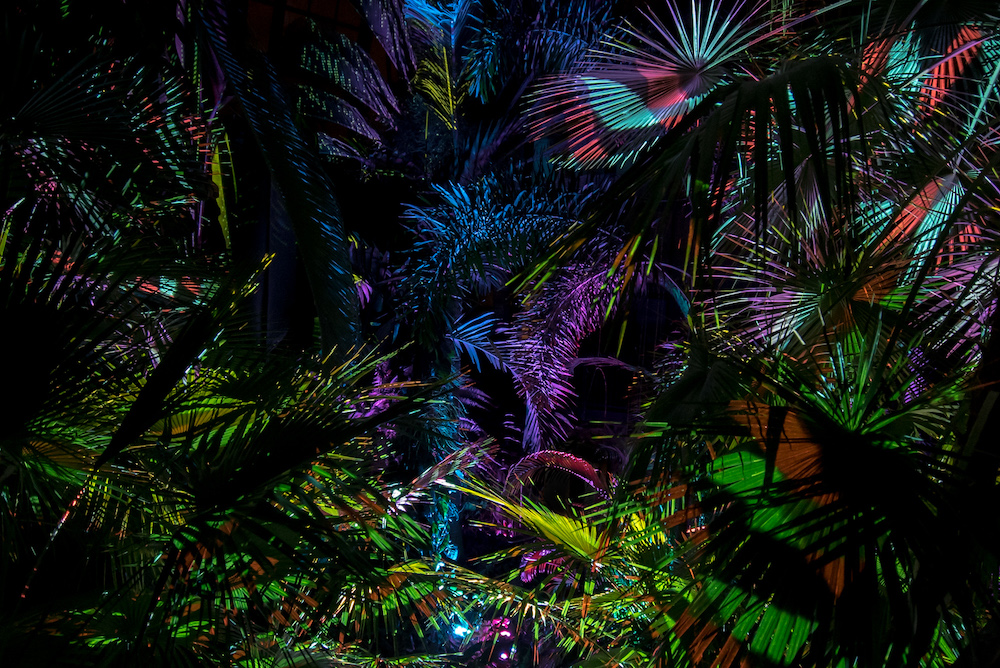Ricardo Rivera loves nothing more than working in a beautiful space with a team he loves, using lights, projectors and sound to bring that space to life.
Rivera remembers the night 20 years ago, when he was mapping projections in the kitchenette of his apartment on Pine Street and realized he could make money creating immersive displays.
Before this realization, Rivera said he didn’t have a big portfolio and sought a way to keep funding his art, but had started developing a technique for mapping projections to spaces.
So, in 2003, he founded Klip Collective, a company that uses projections, lighting and sound design to create immersive experiences. He started the business to pursue commercial clients. He said the first big client the organization had came in 2004, when he worked with the W Hotel to design displays for interior lobbies in five hotels across the country.
“It was literally these projectors that were hooked up to DVD players, literally,” he said. “And it worked. And I did it and some of those installations have been running for years. Some were running over 10 years. It was wild.”
This year is the Bok Building-based company’s 20th anniversary and Rivera reflected with Technical.ly on how much his business has evolved over the years.
At first, he said, the business prioritized architecture and interior design, transforming indoor spaces with light and color and movement. For a while, Klip was also heavily focused on commercial work. One example Rivera remembered was working with Infiniti and projecting a car for an unveiling event.
He said Klip Collective ultimately went from being a company with a big team focused on commercial work to scaling back a bit, maintaining a smaller team and taking on projects team members are passionate about.
“I love where Klip is now because it’s just — we’re doing the projects we want to, there’s not the stress of being a big commercial entity that might fail,” he said. “Now it’s like, I have this cool studio, we work on art projects. We have enough projects that keep us safe. We have big projects on the horizon. And we have a great team and a great group of people where we’ve created a nice, happy, collaborative space for everyone to work with each other.”
A project that stands out to Rivera was Nightscape at Longwood Gardens. He said this was the first opportunity the team had to do multiple related pieces in a larger space with total creative control. He said he didn’t realize he wanted to create this type of art until this experience.
“Doing long-form, site-specific, multi-installation exhibits where we have total creative control in these natural outdoor environments, that’s our niche,” he said. “That’s what I love doing. Everyone on our team, we love doing these projects. And that was the first one that came to us and we put together, and we learned so much from it.”
As the type of projects Klip completes has evolved, so has the technology used to create the displays. Rivera said that when he started, he used to film visuals, create loops out of them, composite them himself and play them on DVD players.
Now, he said, laser projectors have changed the game for this work because the projections are brighter and sharper — and the lamps in them last much longer. He also works in the visual programming language Touch Designer, which he said provides a lot of options for motion, generative video, sound and interactive elements.
“We create very complex systems in our large-scale installations, where we build whole ecosystems [that] we can turn on installations with. There’re computers, projectors, sound, amps, and it’s all controlled from this central place that we’re able to manipulate and control, which is pretty wild,” he said. “We build them all from scratch.”
Moving forward, Rivera said he wants to continue working on site-specific long-form exhibits and music festivals, as well as potentially expand to projects in Europe. The next project Klip has coming up is a visual experience with Making Time at Fort Mifflin at the end of September.
“Just staying true to what we do, and just continuing this path of taking technology and twisting it up and creating weird problems for me and the team to solve — I love it,” he said.







